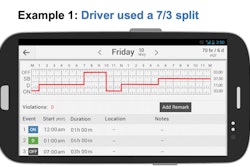Fleets that use forward-facing cameras to record critical event footage are not seeing much resistance from drivers. Inward-facing cameras, on the other hand, continue to raise privacy concerns despite the potential to mitigate two of the most risky driver behaviors: distraction and fatigue.
Driver distraction caused 2,841 fatalities and 400,000 injuries on U.S. roads in 2018, according to the most recent statistics from the National Highway Traffic Safety Administration. Drowsy driving is the leading cause in 21% of fatal crashes, according to a 2014 study by AAA.
With new advancements in camera vision technology, resistance to driver-facing cameras may be coming to an end.
Setting a new standard
Advanced driver assist systems (ADAS) such as collision mitigation, anti-rollover and lane keeping systems already are required on new passenger vehicles. Motor carriers are spec’ing them voluntarily on new tractor purchases at an estimated 50% rate.
Some countries soon will require new vehicles to have inward-facing cameras to further improve road safety. Last December, the European Union updated its general safety regulations. Starting in 2022, vehicles must have driver sensing cameras to obtain the full safety rating. By 2024, any new vehicle that does not have a drowsy driver monitoring system cannot be registered.
China has taken a more aggressive approach. It has required that all commercial vehicles built in 2019 and 2020 have driver monitoring systems (DMS) to detect seatbelt usage, drowsy driving and distracted driving events such as smoking and phone usage.










